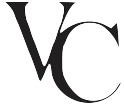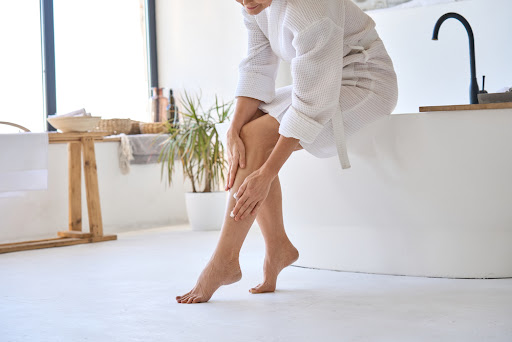Varicose veins have been around since the beginning of time, and doctors and vein specialists have been trying to find relief and treatment for centuries.
Before advanced modern vein treatment options were available, you really only had two options for treating varicose veins– compression therapy or invasive surgery.
Compression therapy is still used today; however, painful surgery to physically remove the swollen vein with a scalpel has been replaced with more modern non-invasive and pain-free treatments.
Treatments have no doubt evolved considerably from the early days, and there are a lot of vein treatments to choose from. In this article, we will discuss what varicose veins are, how they differ from spider veins and some of the most popular vein treatments available to treat vein issues in 2023.
WHAT ARE VARICOSE VEINS?
Varicose veins are enlarged twisted veins. They can show up anywhere in the body but are most common in the legs. While they are considered to be a medical condition, they are not typically considered to be dangerous. Still, they can be unsightly and uncomfortable, occasionally leading to more serious problems if ignored.
The old way of thinking was that varicose veins were just a “cosmetic” problem or a sign of “growing older.” Most general doctors quickly learned that varicose veins are a medical condition that requires a specialist. That is exactly why many insurance companies now cover some vein treatments and why primary care doctors now refer their patients to board-certified vein doctors at vein treatment clinics like The Vein Centre.
WHAT ARE SPIDER VEINS?
You could look at spider veins as the little cousin of varicose veins. They share many of the same traits as varicose veins; however, they are milder, smaller superficial blood vessels and do not cause discomfort.
Spider veins are found just under the skin. Usually, they look like a spider web, whereas varicose veins are raised, swollen blood vessels that can twist and bulge.
Because spider veins are considered more of a cosmetic issue than a medical condition, vein treatments are typically not covered by insurance.
TOP MOST POPULAR VEIN TREATMENTS PERFORMED AT THE VEIN CENTRE
Varicose and spider veins are both abnormal, dilated blood vessels that develop when the valves and walls of the veins are weak, causing blood to pool in the veins and create pressure. This leads to the veins becoming enlarged and visible.
Both vein issues are extremely common, affecting half of people 50 years and older. Often, people have both varicose veins and spider veins. However, if you only have spider veins, that does not mean they will turn into varicose veins.
The vein treatment option that is best for you might depend on if you have varicose veins, spider veins, or both. Certain allergies, health conditions and other risk factors will need to be discussed with a board-certified vein doctor.
To help you have a better idea of your options, here are the top five modern vein treatments available to date for varicose and spider veins and a list of each vein treatment’s pros and cons.
1: SCLEROTHERAPY
Sclerotherapy is the most common treatment for both spider and small varicose veins. However, we most often use Sclerotherapy to treat smaller spider veins. Some of the other vein treatment options we will discuss next are usually better solutions for larger varicose veins.
Sclerotherapy is a simple injection that involves a tiny needle that injects a solution into the vein to close the vessel. The solution causes the vein to shrink and then dissolve over a period of weeks. The body will naturally absorb the treated vein.
The number of injections you receive depends on the size and location of your veins. It is a virtually pain-free and very short vein treatment procedure that will have you in and out of the office in as little as 15 minutes.
You can expect small veins to disappear in just a few weeks following treatment. In contrast, more prominent veins might take several months to go away.
The recovery time required after sclerotherapy is very quick. You’ll need to wear compression stockings or bandages for about two weeks, but most patients can return to all regular activities on the same day as treatment.
Pros:
- Extremely quick (typically 15 minutes).
- Minimal to no discomfort or pain.
- Is safe for all skin types and tones.
- No restriction on activity following treatment.
- Bruising and swelling are minor and short-lived.
- Can treat spider veins that are too large to be resolved by a laser.
Cons:
- Full results can take up to six months to appear.
- If saline is used, some find the treatment uncomfortable.
- You might need multiple treatments for optimal results.
- Might not be suitable for people with dark skin.
- If not properly performed, could cause more veins to appear.
- Temporary redness, mild itching or burning in the treatment area
2: AMBULATORY PHLEBECTOMY
This vein treatment is only used to treat small varicose veins. The procedure can be performed as an outpatient surgical procedure or by a vein specialist with the proper equipment.
A local anesthetic is administered during the procedure, so there is no pain. Once numb, the doctor makes a series of tiny incisions to access the veins with a surgical hook. The vein is then disrupted, and segments of the vein are removed.
Because this procedure is less invasive than vein stripping, recovery times are also shorter. Patients can return to regular activity almost immediately; however, prescription-strength compression stockings should be worn for at least one week to reduce swelling and discomfort.
Pros:
- Can only be used on spider veins.
- Vein removal without surgery, stitches or hospitalization.
- Non-invasive and pain free.
- Minimal to no recovery time.
- Incisions completely heal within two weeks.
Cons:
- The tiny incisions could result in minimal scarring.
- Mild pain and swelling.
- Bruising around the treatment site.
- Allergic reactions to the anesthetic can also happen.
3: ENDOVENOUS LASER ABLATION
Laser ablation, also known as endovenous laser ablation therapy (EVLT), is a very cost-effective FDA-approved vein treatment used to treat varicose veins that is replacing traditional open vein surgery.
The minimally invasive procedure stops the blood flowing from veins that cause enlarged varicose veins. Doing so will cause the veins to disappear and should relieve the painful symptoms they cause.
Guided by X-ray images, a doctor will thread a thin laser fiber into the problem vein through a tiny needle. Once the problem vein is closed, blood will flow through the remaining healthy veins. This outpatient procedure requires no anesthesia, is virtually painless, and only takes about 30 minutes to one hour to complete.
While you can expect immediate pain relief, depending on the severity of your varicose veins, some treatments can take up to 12 months for the unhealthy varicose veins to become invisible.
Pros:
- Has an extremely high success rate.
- Has a very low recurrence rate.
- Relatively pain-free.
- Is safe for all skin types.
- Minimal downtime.
Cons:
- Mild bruising and aches may occur in the first-week post-treatment.
- Does not treat smaller, more superficial veins.
- Is not a single-step procedure; it requires several consecutive steps.
- There can be a small risk of damaging nerves or tissue.
4: VARITHENA® VEIN TREATMENTS
Varithena® is an FDA-approved nonsurgical, minimally invasive treatment for both small and large varicose veins, the greater saphenous vein (GSV), and previously treated veins that might not have responded well to other vein treatments.
The procedure is similar to sclerotherapy in that it is a virtually painless outpatient procedure performed with a small needle via a small injection.
During Varithena® vein treatment, the diseased vein is injected with prescription liquid, the foam fills a section of the vein and causes the vein to collapse. As the vein disappears, the body sends the blood flow through nearby healthier veins.
Depending on the patient’s needs, follow-up treatment sessions can be scheduled; however, most patients are satisfied with their results after only one treatment session.
You will be required to wear compression stockings for at least two weeks and should avoid heavy activity for at least one week. Your doctor will also suggest you regularly walk for at least one month following treatment to promote healthy circulation.
Aside from that, because Varithena® is a minimally invasive treatment, most normal activities can be resumed immediately.
Pros
- No incision or heat.
- It’s effective at treating both spider veins and varicose veins of most diameters.
- Often only one treatment is needed.
- Improved blood flow to and from your legs to your heart.
- There’s no risk of damaging nerves or tissue.
- Significantly improves the appearance of varicose veins.
Cons
- Injection site bruising, pain, tenderness, or itching.
- Repeat treatment might be required if the vein is very large and doesn’t fully collapse.
- Risk of allergic reaction (rash, headaches, or swelling of the hands, face, or mouth.)
- Risk of blood clots and ulcers in some high-risk patients.
5: VENASEAL™ CLOSURE
VenaSeal™ is a relatively new vein closure procedure used to close small diseased veins, most often the saphenous vein, and offers some unique advantages over other vein treatment options. It is the only treatment authorized in the United States that is non-thermal, non-tumescent, and non-sclerosant, which reduces discomfort and recovery time.
If you have varicose veins and want reduced needle sticks, minimal to no recovery time, and don’t want to wear compression stockings, VenaSeal™ might be the best vein treatment solution for you.
No foam or solution injections are used. Instead, a small catheter delivers specially formulated medical intravenous adhesive to the diseased vein. This is done via a minimal incision to access the vein. The catheter is guided by ultrasound, allowing for effective adhesive application. This adhesive seals the vein walls, rerouting blood to nearby healthy veins and relieves symptoms. The vein is compressed, the catheter is withdrawn, and the treatment is done!
The treatment typically takes anywhere from 30 minutes to an hour. Again, because VenaSeal™ accomplishes vein closure in a relatively non-destructive way, you can immediately return to all activities.
Another advantage of VenaSeal™ is how quickly it works. You can expect your symptoms to start improving as soon as the adhesive is injected and the diseased vein begins to close.
Pros
- Multiple veins can be treated in one session.
- No need for compression stockings after treatment.
- Less risk of complications compared to EVLA or surgery.
- Immediate return to all normal activities.
Cons
- Not recommended for use on all veins.
- Leaves a foreign substance behind in the body.
- Possibility of mild to moderate discomfort for 1-2 weeks following treatment.
- Temporary skin numbness if inflammation affects surrounding nerves.
- Allergic reaction to the adhesive.
VEIN RELIEF AT THE VEIN CENTRE
The above top vein treatments are only five of our most requested minimally invasive procedures that we perform here at The Vein Centre. We have several other options to treat various forms of vein disease, including Radiofrequency Ablation and treatment for Venous Ulcers.
If you have varicose veins, spider veins or another vein disease and live near Nashville, let our friendly and experienced staff help you decide which vein treatment is best for your unique needs.
You can request a consultation for varicose vein treatment here on our website or give us a call. We have three locations, one in Franklin, one in Belle Meade, and one in Mt. Juliet.



